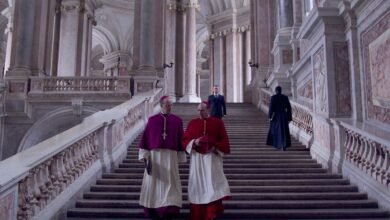
On Wall Street, happy days are here again, and Jay Powell, the chair of the Federal Reserve, is the toast of the market. On Wednesday and Thursday, stock prices surged after Powell and his colleagues indicated that they are likely to cut a key interest rate three times next year. Market interest rates, which are tied to the Fed’s actions, fell sharply in anticipation of the central bank’s policy pivot becoming a reality.
Just a couple of weeks ago, Powell, who has spent the past two years trying to bring down inflation, said that it was too early to consider interest-rate cuts. But, in a press conference on Wednesday, following a gathering of Fed policymakers, he said, “That’s really what happened in today’s meeting.” A set of new projections showed that Fed officials now expect the federal funds rate, which they control, to be roughly 4.6 per cent at the end of next year, which is about a three-quarters of a percentage point below its current level. Analysts translated these figures into three interest-rate cuts in 2024—a quarter point each time. “Powell played Santa Claus early,” Diane Swonk, the chief economist at the accounting firm KPMG, told the Wall Street Journal.
For investors, that was certainly true. And the implications go well beyond the stock market. Cuts in the federal funds rate would likely reduce the cost of borrowing on everything from home loans and car loans to business overdrafts. Mortgage rates are already dropping a bit: on Thursday, they dipped below seven per cent. Cheaper money could also have implications for the 2024 Presidential election. (George H. W. Bush blamed the tight money policies of Alan Greenspan, the Fed chair at the time, for his 1992 loss to Bill Clinton.) For all these reasons, it’s worth asking why Powell and his colleagues decided that it was time for a pre-Christmas surprise.
The most convincing explanation is that they are playing catch-up with a sharp fall in the inflation rate, which has brought the rate of price increases a lot closer to the Fed’s target of two per cent. For months, Powell argued that we needed to see further progress on inflation, and until that progress materialized rate cuts weren’t justified. Now that inflation has dropped to about three per cent—within a point or so of the Fed’s goal—Powell and his colleagues are reacting to concerns about overdoing their anti-inflation drive and driving the economy into a recession. “Inflation collapsed in front of them, and they had to shift quickly,” Tim Duy, a longtime Fed watcher who is now the chief U.S. economist at SGH Macro Advisors, told me. “The way the Fed thinks about it is if inflation falls, holding interest rates steady means financial conditions are actually tightening, and they don’t want that.”
The key concept here is the distinction between nominal and real interest rates. If the interest rate is five per cent but the inflation rate is also five per cent and people expect the former to continue at that rate, the real—i.e., inflation-adjusted—interest rate is zero. If the inflation rate drops to three per cent but the nominal interest rate stays at five per cent, the real interest rate rises to two per cent despite no change in the nominal rate. Since March of this year, that is roughly what has happened in the U.S. As the Fed has maintained the federal funds rate at 5.25 to 5.5 per cent, the annual rate of consumer price inflation has fallen from five per cent to 3.1 per cent. If inflation expected to stay at about these levels, the real interest rate has risen from close to zero to roughly two per cent over the past nine months.
Economists believe that real rates influence many types of spending, including residential and business investment. If the Fed hadn’t reacted to the rise in real rates, it could conceivably have threatened the “soft landing” for the economy that now seems tantalizingly close. From this point of view, the policy pivot can be seen as more of a necessary preventative measure than a declaration of victory over inflation. In his remarks on Wednesday, Powell seemed keen to emphasize that the Fed wasn’t following any arithmetic rule linking the federal funds rate to inflation. However, he also acknowledged that real interest rates are something “we are very conscious of and aware of and monitor.” Last month, one of his colleagues, Christopher Waller, foreshadowed this week’s pivot, arguing that falling inflation justified lower interest rates on the basis of virtually any policy rule, regardless of how the rest of the economy was doing.
To be sure, Powell also reiterated the Fed’s determination to hit its two-per-cent target and even raise rates again if necessary. “These projections are not a committee decision or plan,” he said at his press conference. “If the economy does not evolve as projected, the path of policy will adjust as appropriate.” But Powell also said that he and his colleagues don’t expect another rate hike, and financial markets are anticipating the first rate reduction to come in March. On Thursday, Goldman Sachs predicted that there would be rate cuts at three successive Fed meetings: in March, May, and June. If the Fed follows this timetable, it could perhaps put interest rates on hold for the second half of 2024. Powell insisted that politics play no part in the Fed’s deliberations. But virtually all Fed chairs would prefer to keep a low profile during Presidential campaigns, if possible. ♦
Source link






